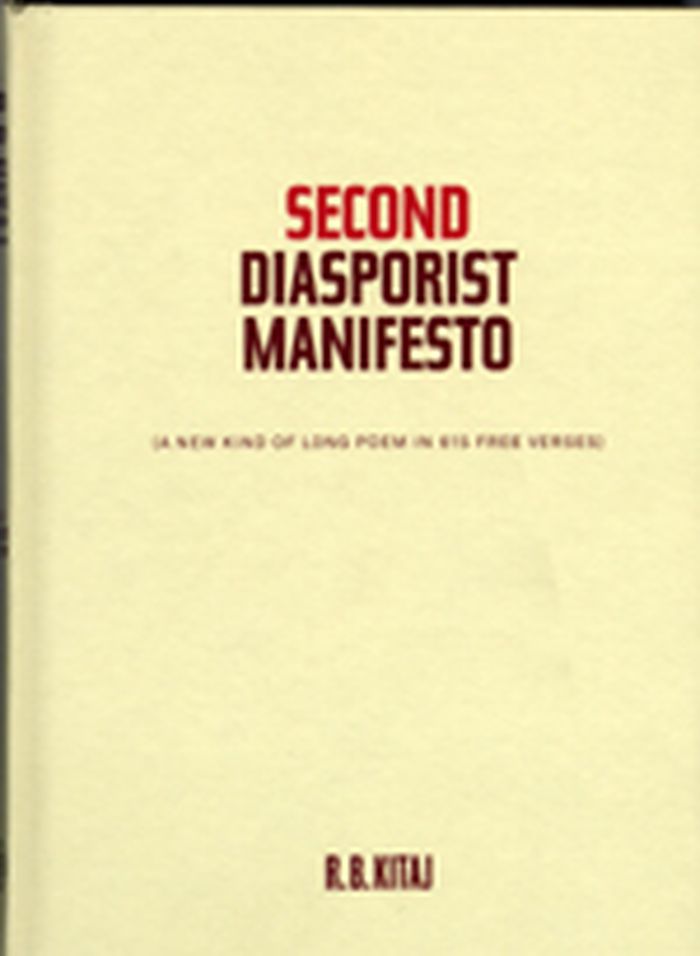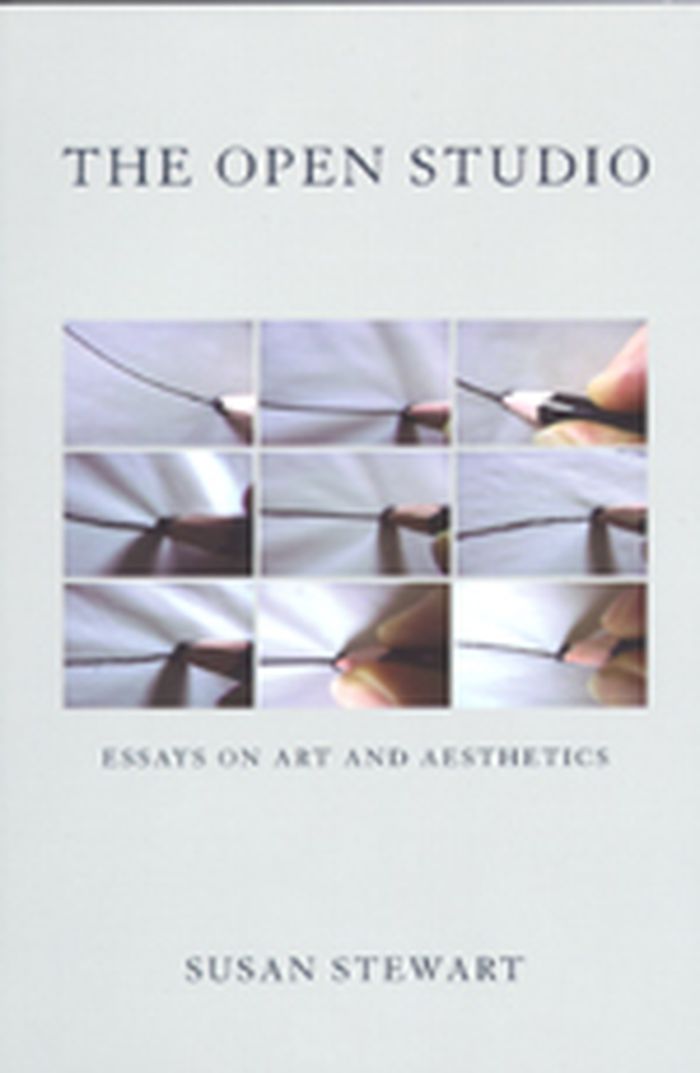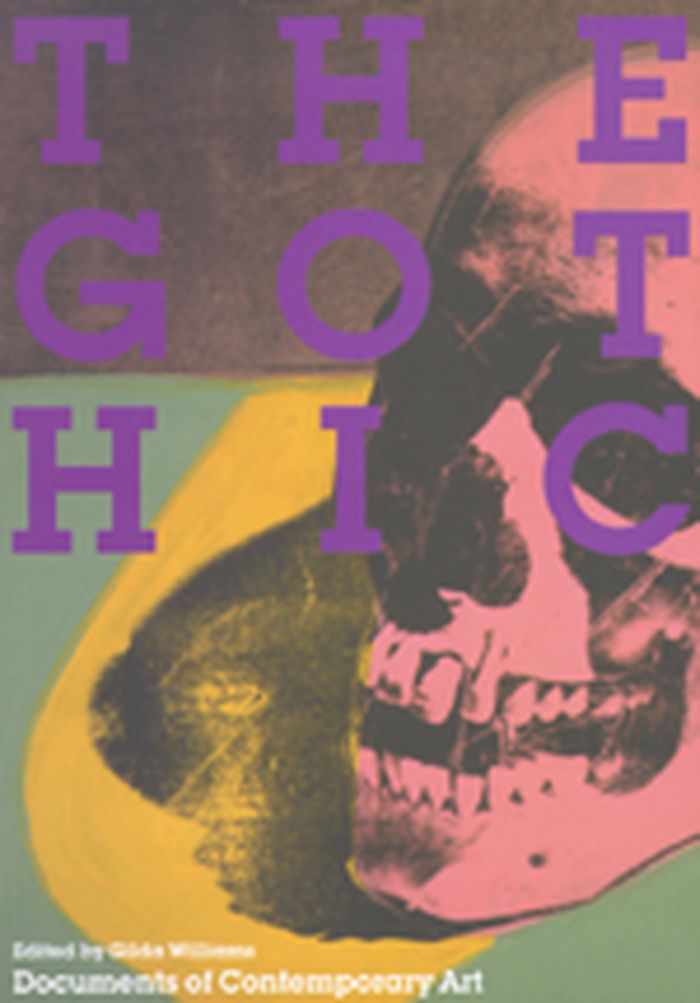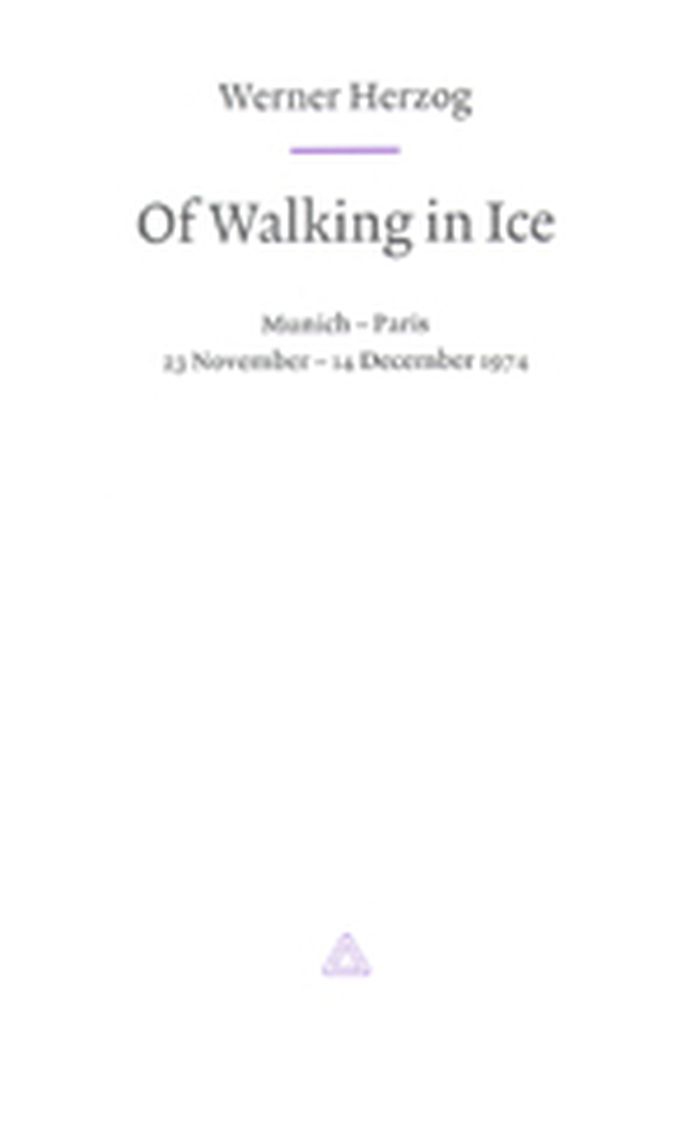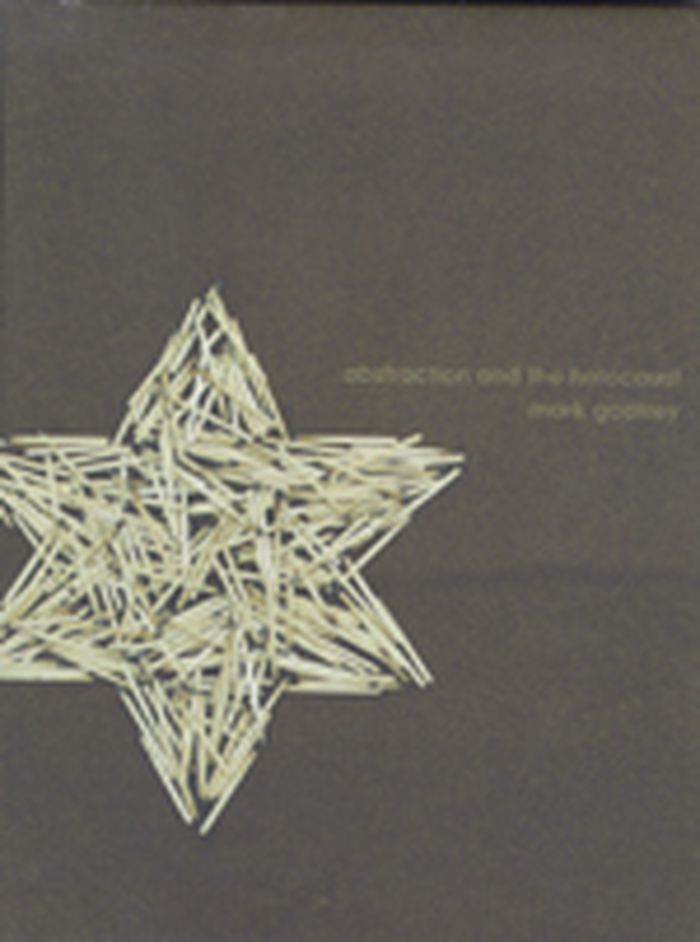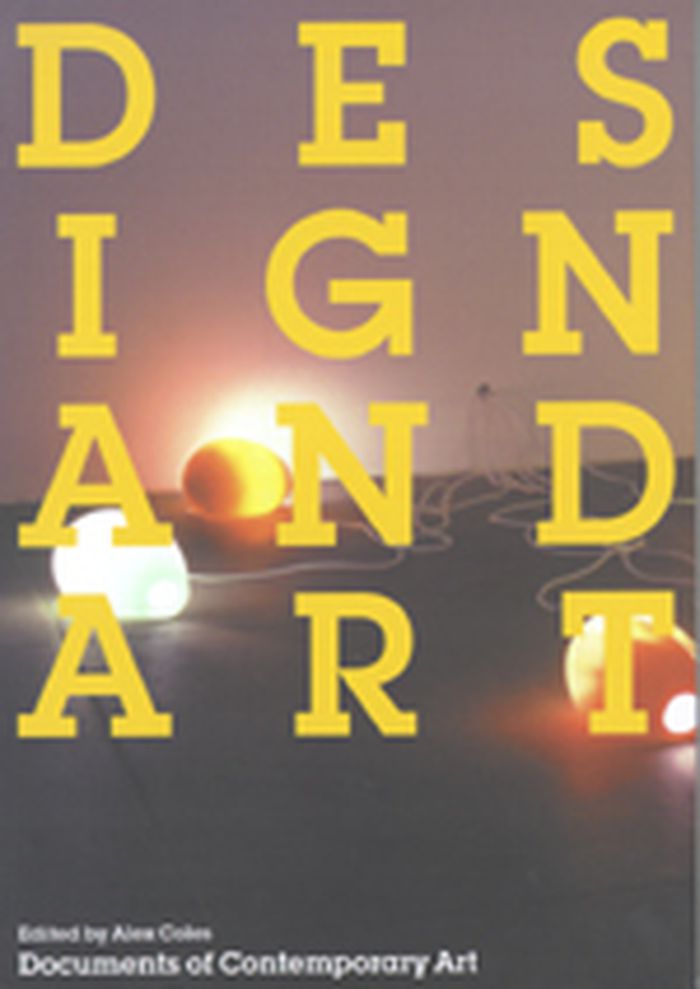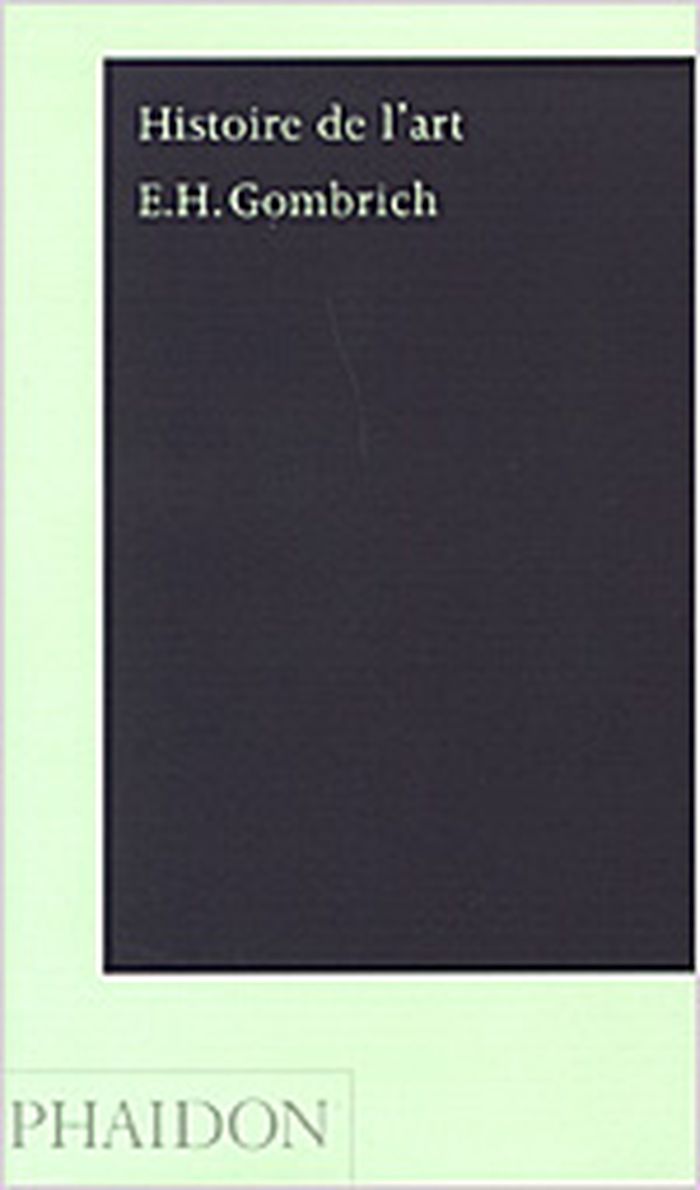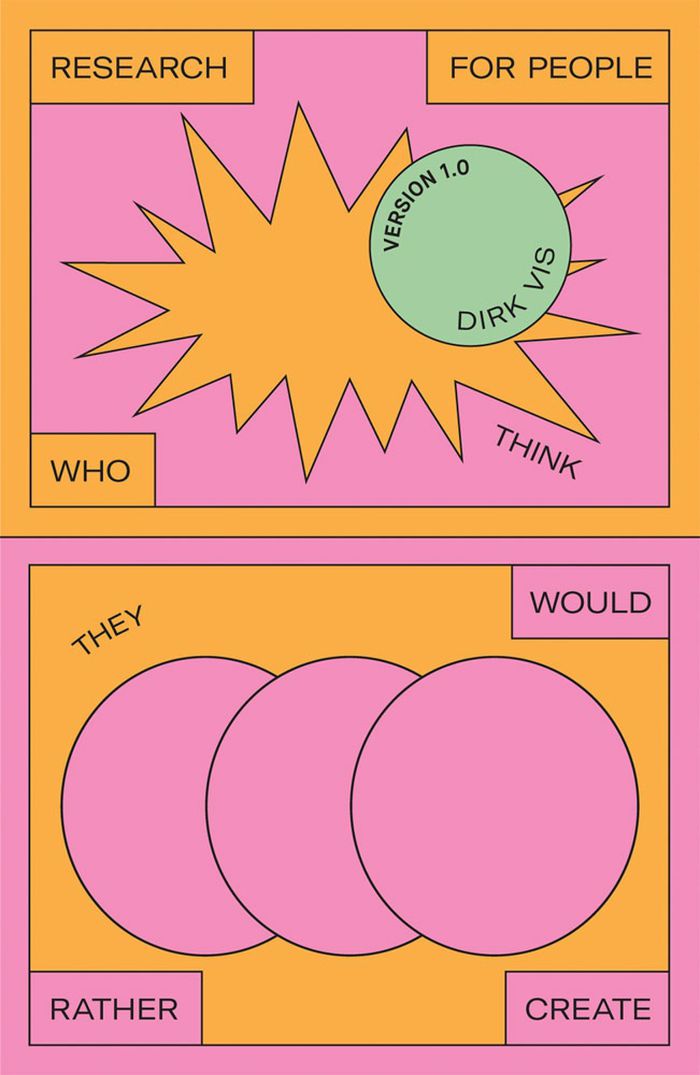$28.95
(available to order)
Summary:
A follow-up to First Diasporist Manifesto, this book is a personal reflection on the Jewish Question in contemporary art as it is lived and painted and imagined by one of the most innovative and controversial artists. Including 41 images of the artist's work, it takes a look into an artist's unusual life and work.
Second diasporist manifesto: A new kind of long poem in 615 free verses
Actions:
Price:
$28.95
(available to order)
Summary:
A follow-up to First Diasporist Manifesto, this book is a personal reflection on the Jewish Question in contemporary art as it is lived and painted and imagined by one of the most innovative and controversial artists. Including 41 images of the artist's work, it takes a look into an artist's unusual life and work.
Art Theory
$33.95
(available to order)
Summary:
Poets often have responded vitally to the art of their time, and ever since Susan Stewart began writing about art in the early 1980s, her work has resonated with practicing artists, curators, art historians, and art critics. Rooted in a broad and learned range of references, Stewart's fresh and independent essays bridge the fields of literature, aesthetics, and(...)
The open studio : Essays on art and aesthetics
Actions:
Price:
$33.95
(available to order)
Summary:
Poets often have responded vitally to the art of their time, and ever since Susan Stewart began writing about art in the early 1980s, her work has resonated with practicing artists, curators, art historians, and art critics. Rooted in a broad and learned range of references, Stewart's fresh and independent essays bridge the fields of literature, aesthetics, and contemporary art. Gathering most of Stewart's writing on contemporary art—long and short pieces first published in small magazines, museum and gallery publications, and edited collections—The Open Studio illuminates work ranging from the installation art of Ann Hamilton to the sculptures and watercolors of Thomas Schütte, the prints and animations of William Kentridge to the films of Tacita Dean. Stewart's essays are often the record of studio conversations with living artists and curators, and of the afterlife of those experiences in the solitude of her own study. Considering a wide variety of art forms, Stewart finds pathbreaking ways to explore them. Whether she is following central traditions of painting, drawing, sculpture, film, photography, and printmaking or exploring the less well-known realms of portrait miniatures, collecting practices, doll-making, music boxes, and gardening, Stewart speaks to the creative process in general and to the relation between art and ethics. The Open Studio will be read eagerly by scholars of art, poetry, and visual theory; by historians interested in the links between contemporary and classic literature and art; and by teachers, students, and practitioners of the visual arts.
Art Theory
The gothic
$23.95
(available to order)
Summary:
This collection of writings examines the pervasive and influential role of "the Gothic" in contemporary visual culture. The contemporary Gothic in art is informed as much by the stock themes of the eighteenth- and nineteenth-century Gothic novel as it is by more recent permutations of the Gothic in horror film theory, Lacanian psychoanalysis, and Goth subcultures. This(...)
The gothic
Actions:
Price:
$23.95
(available to order)
Summary:
This collection of writings examines the pervasive and influential role of "the Gothic" in contemporary visual culture. The contemporary Gothic in art is informed as much by the stock themes of the eighteenth- and nineteenth-century Gothic novel as it is by more recent permutations of the Gothic in horror film theory, Lacanian psychoanalysis, and Goth subcultures. This reader from London's Whitechapel Gallery brings together artists as different as Matthew Barney, Gregor Schneider, Louise Bourgeois, and Douglas Gordon; its intent is not to use "the Gothic" to group together dissimilar artists but rather to shed light on a particular understanding of their practice. Anthony Vidler looks at ideas of the uncanny to explore Rachel Whiteread's House, and Jeff Wall uses the motif of vampirism to analyze fellow artist Dan Graham's Kammerspell; Hal Foster considers Robert Gober's recent work--laden with Christian symbolism, criticism of America as a nexus of power, and fragmented bodies--as an updated American Gothic, and Kobena Mercer examines the Gothic's depiction of the Other in relation to Michael Jackson's pop video Thriller. Texts by artists including Mike Kelley, Damien Hirst, Tacita Dean, Jonathan Meese, and Catherine Sullivan are complemented by extracts from Walpole's genre-establishing gothic novel The Castle of Otranto, William Gibson, Bret Easton Ellis, and Stephen King, among others, and theoretical writings by such key thinkers as Carol Clover, Beatriz Colomina, Julia Kristeva, Eve Kosofsky Sedgwick, Marina Warner, and Slavoj Zizek. The Gothic provides the first comprehensive overview of the uses of Gothic in contemporary visual culture.
Art Theory
Of walking in ice
$28.95
(available to order)
Summary:
In the winter of 1974, filmmaker Werner Herzog made a three week solo journey from Munich to Paris on foot. He believed it was the only way his close friend, film historian Lotte Eisner, would survive a horrible sickness that had overtaken her. During this monumental odyssey through a seemingly endless blizzard, Herzog documented everything he saw and felt with intense(...)
September 2007, New York
Of walking in ice
Actions:
Price:
$28.95
(available to order)
Summary:
In the winter of 1974, filmmaker Werner Herzog made a three week solo journey from Munich to Paris on foot. He believed it was the only way his close friend, film historian Lotte Eisner, would survive a horrible sickness that had overtaken her. During this monumental odyssey through a seemingly endless blizzard, Herzog documented everything he saw and felt with intense sincerity. This diary is dotted with a pastiche of rants about the extreme cold and utter loneliness, notes on Herzog's films and travels, poetic descriptions of the snowy countryside, and personal philosophizing. What is most remarkable is that the reading of the book is in continuity with the experience of watching his films; it's as if, through this walk, we witness the process in which images are born. Although he received a literary award for it, this introspective masterpiece has lingered out of print since 1979. Beautifully designed and emotionally impressive, Of Walking in Ice is the first in a color-coded series of remarkable yet long-forgotten titles being republished by Free Association.
$59.95
(available to order)
Summary:
This absorbing book looks closely at a series of American art and architectural projects that respond to the memory of the Holocaust. Mark Godfrey investigates how abstract artists and architects—whose work by its very nature rejects conventional figuration or symbolism—have negotiated Holocaust memory without ever representing the Holocaust directly. His(...)
Abstraction and the holocaust
Actions:
Price:
$59.95
(available to order)
Summary:
This absorbing book looks closely at a series of American art and architectural projects that respond to the memory of the Holocaust. Mark Godfrey investigates how abstract artists and architects—whose work by its very nature rejects conventional figuration or symbolism—have negotiated Holocaust memory without ever representing the Holocaust directly. His thought-provoking conclusions will alter the way we understand abstraction, the place of abstract artists in art history, and “Holocaust art.” The book considers works from 1951 to the present and includes, among others, paintings by Morris Louis, Frank Stella, and Barnett Newman; Louis Kahn’s proposal for New York City’s first Holocaust memorial; and United States Holocaust Memorial Museum commissions by Richard Serra, Joel Shapiro, Sol Lewitt, and Ellsworth Kelly. The book concludes with a thoughtful discussion of Peter Eisenman’s Berlin Holocaust memorial and Susan Hiller’s photographic and video work, The J. Street Project, and shows how these works extend the possibilities of abstraction as a form of Holocaust representation.
Art Theory
books
$41.95
(available to order)
Summary:
In his thoughtful collection of essays on the relationship of architecture and the arts, Giuliana Bruno addresses the crucial role that architecture plays in the production of art and the making of public intimacy. As art melts into spatial construction and architecture mobilizes artistic vision, Bruno argues, a new moving space--a screen of vital cultural memory--has(...)
Public intimacy: architecture and the visual arts
Actions:
Price:
$41.95
(available to order)
Summary:
In his thoughtful collection of essays on the relationship of architecture and the arts, Giuliana Bruno addresses the crucial role that architecture plays in the production of art and the making of public intimacy. As art melts into spatial construction and architecture mobilizes artistic vision, Bruno argues, a new moving space--a screen of vital cultural memory--has come to shape our visual culture. Taking on the central topic of museum culture, Bruno leads the reader on a series of architectural promenades from modernity to our times. Through these "museum walks," she demonstrates how artistic collection has become a culture of recollection, and examines the public space of the pavilion as reinvented in the moving-image art installation of Turner Prize nominees Jane and Louise Wilson. Investigating the intersection of science and art, Bruno looks at our cultural obsession with techniques of imaging and its effect on the privacy of bodies and space. She finds in the work of artist Rebecca Horn a notable combination of the artistic and the scientific that creates an architecture of public intimacy. Considering the role of architecture in contemporary art that refashions our "lived space"--and the work of contemporary artists including Rachel Whiteread, Mona Hatoum, and Guillermo Kuitca--Bruno argues that architecture is used to define the frame of memory, the border of public and private space, and the permeability of exterior and interior space. Architecture, Bruno contends, is not merely a matter of space, but an art of time.
books
April 2007
Art Theory
books
The cinematic
$25.95
(available to order)
Summary:
The cinematic has been a springboard for the work of many influential artists, including Victor Burgin, Philip-Lorca diCorcia, Stan Douglas, Nan Goldin, Douglas Gordon, Cindy Sherman, and Jeff Wall, among others. Much recent cinema, meanwhile, is rich with references to contemporary photography. Video art has taken a photographic turn into pensive slowness; photography(...)
March 2007, London / Cambridge
The cinematic
Actions:
Price:
$25.95
(available to order)
Summary:
The cinematic has been a springboard for the work of many influential artists, including Victor Burgin, Philip-Lorca diCorcia, Stan Douglas, Nan Goldin, Douglas Gordon, Cindy Sherman, and Jeff Wall, among others. Much recent cinema, meanwhile, is rich with references to contemporary photography. Video art has taken a photographic turn into pensive slowness; photography now has at its disposal the budgets and scale of cinema. This addition to Whitechapel’s Documents of Contemporary Art series surveys the rich history of creative interaction between the moving and the still photograph, tracing their ever-changing relationship since early modernism.
books
March 2007, London / Cambridge
$28.95
(available to order)
Summary:
This reader in Whitechapel's Documents of Contemporary Art series investigates the interchange between art and design. Since the Pop and Minimalist eras--as the work of artists ranging from Andy Warhol to Dan Graham demonstrates--the traditional boundaries between art and architectural, graphic, and product design have dissolved in critically significant ways. Design and(...)
Design and art: Documents of contemporary art
Actions:
Price:
$28.95
(available to order)
Summary:
This reader in Whitechapel's Documents of Contemporary Art series investigates the interchange between art and design. Since the Pop and Minimalist eras--as the work of artists ranging from Andy Warhol to Dan Graham demonstrates--the traditional boundaries between art and architectural, graphic, and product design have dissolved in critically significant ways. Design and Art traces the rise of the "design-art" phenomenon through the writings of critics and practitioners active in both fields. The texts include writings by Paul Rand, Hal Foster, Miwon Kwon, and others that set the parameters of the debate; utopian visions, including those of architect Peter Cook and writer Douglas Coupland; project descriptions by artists (among them Tobias Rehberger and Jorge Pardo) juxtaposed with theoretical writings; surveys of group practices by such collectives as N55 and Superflex; and views of the artist as mediator--a role assumed in the past to be the province of the designer--as seen in work by Frederick Kiesler, Ed Ruscha, and others. Finally, a book that doesn't privilege either the art world or the design world but puts them in dialogue with each other.
Art Theory
Histoire de l'art
$24.95
(available to order)
Summary:
«Histoire de l'art» de E.H. Gombrich est l'un des ouvrages sur l'art les plus célèbres et les plus populaires jamais publiés. Depuis plus de cinquante ans, il demeure une introduction inégalée à l'ensemble du sujet, des premières peintures rupestres à l'art d'aujourd'hui. Dans le monde entier, les lecteurs de tous âges et de tous milieux ont trouvé en Gombrich un(...)
Histoire de l'art
Actions:
Price:
$24.95
(available to order)
Summary:
«Histoire de l'art» de E.H. Gombrich est l'un des ouvrages sur l'art les plus célèbres et les plus populaires jamais publiés. Depuis plus de cinquante ans, il demeure une introduction inégalée à l'ensemble du sujet, des premières peintures rupestres à l'art d'aujourd'hui. Dans le monde entier, les lecteurs de tous âges et de tous milieux ont trouvé en Gombrich un véritable maître, qui allie la connaissance et la sagesse à un don unique pour communiquer directement sa profonde affection pour les œuvres qu'il décrit. Cette «Histoire de l'art» doit sa popularité durable au style simple et direct de l'auteur, ainsi qu'à son ton narratif. Son but, écrit-il, est «d'apporter un certain ordre, une certaine clarté dans l'abondance de noms propres, de dates, de styles qui compliquent quelque peu les ouvrages plus spécialisés». Grâce à son intelligence de la psychologie des arts visuels, il nous fait percevoir l'histoire de l'art comme un «enchaînement interrompu de traditions encore vivantes» qui «relie l'art de notre temps à celui de l'âge des pyramides».
Art Theory
$28.00
(available to order)
Summary:
In this user-friendly volume, author Dirk Vis lays out the basics of research for artists, offering a guide to the groundwork that has long been lacking. How to formulate your topic and your argument; how to structure your text rhetorically; how to deploy quotations effectively; how to disseminate and distribute your work in a community: Vis guides readers through all(...)
Research for people who think they would rather create
Actions:
Price:
$28.00
(available to order)
Summary:
In this user-friendly volume, author Dirk Vis lays out the basics of research for artists, offering a guide to the groundwork that has long been lacking. How to formulate your topic and your argument; how to structure your text rhetorically; how to deploy quotations effectively; how to disseminate and distribute your work in a community: Vis guides readers through all of these questions in a clear and accessible fashion. This book is essential for students of the arts across all disciplines.
Art Theory
